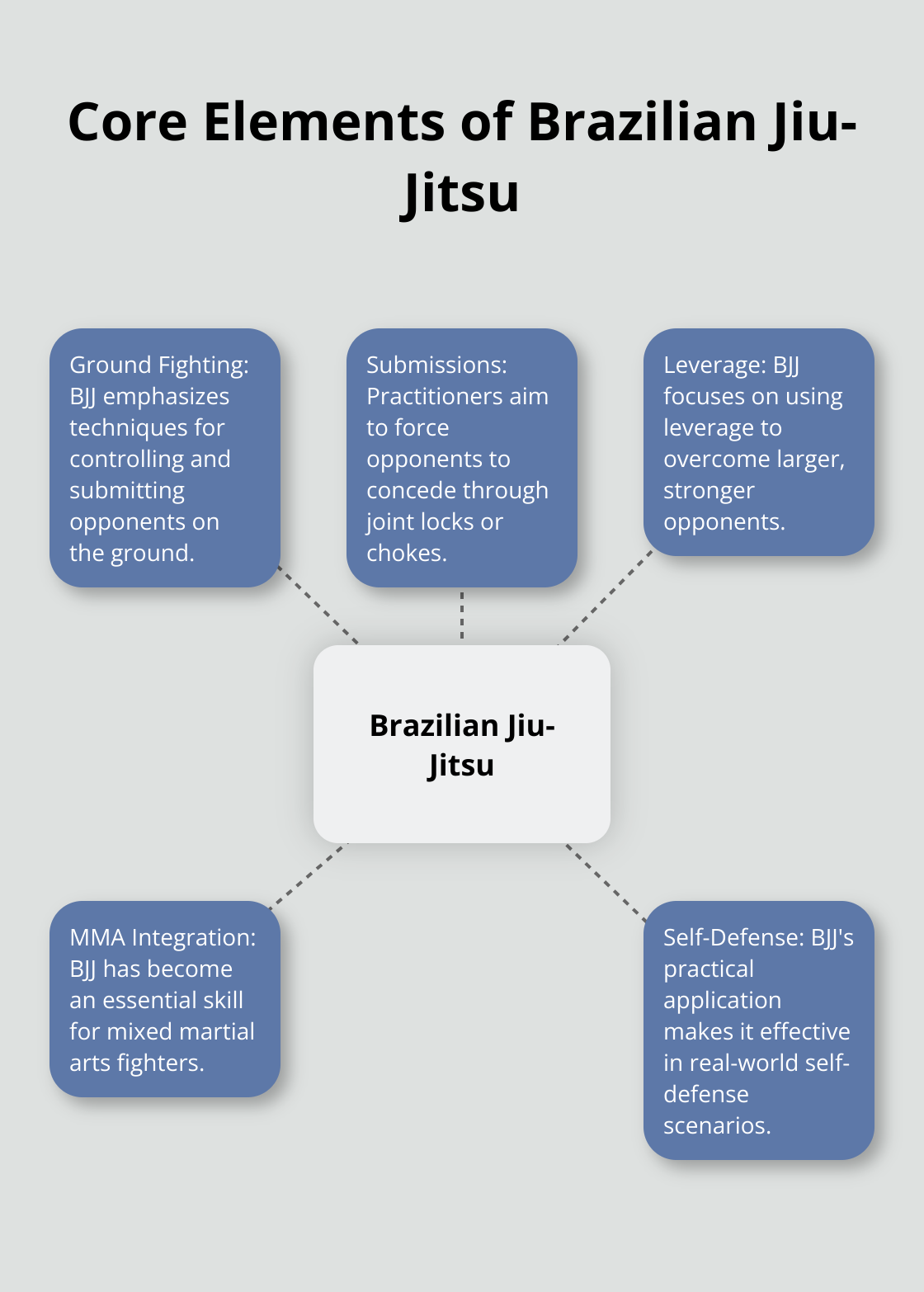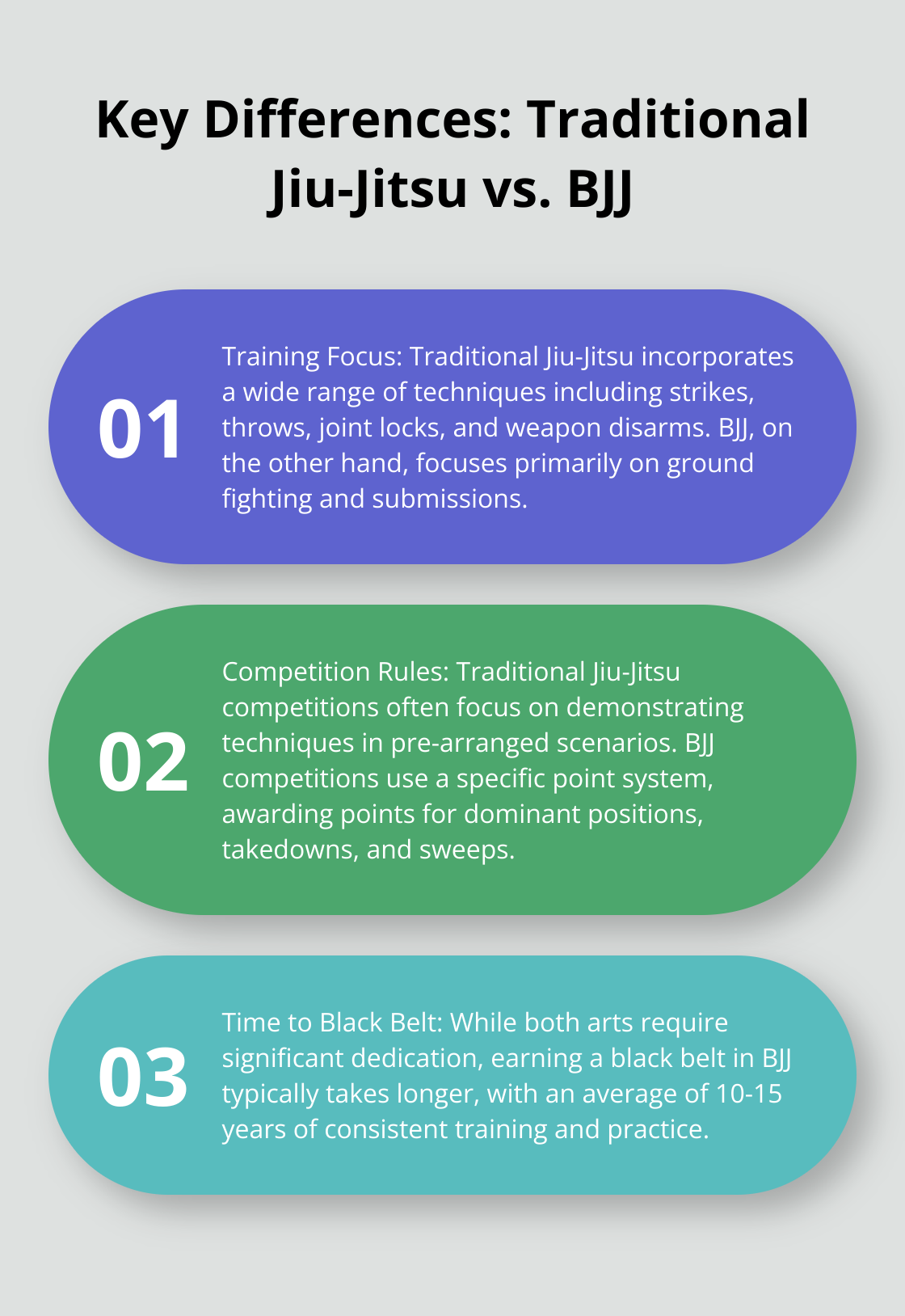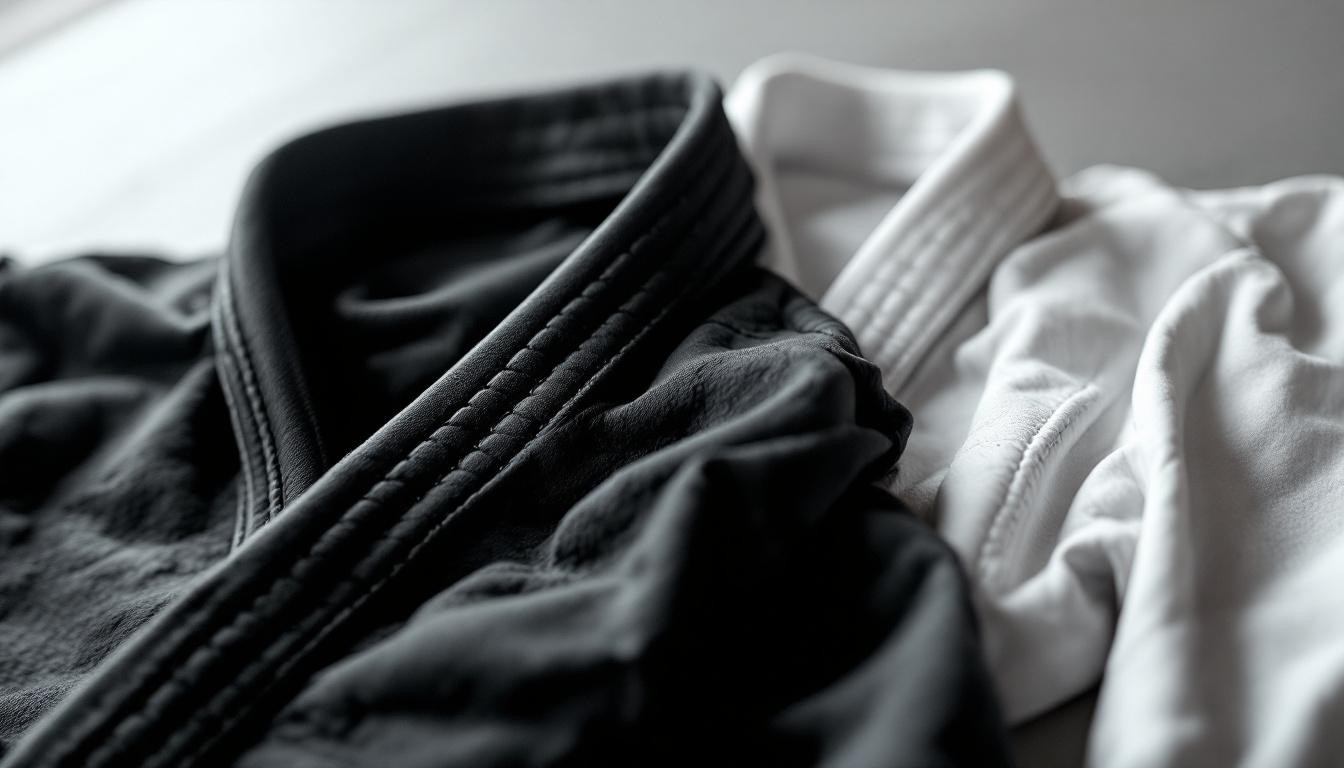At Jiu jitsu, we often get asked about the differences between traditional Jiu-Jitsu and Brazilian Jiu-Jitsu (BJJ). These two martial arts share a common ancestry but have evolved into distinct disciplines.
In this post, we’ll explore the origins, techniques, and philosophies of both Jiu-Jitsu and BJJ, including the rising popularity of Combat Jiu Jitsu. We’ll break down the key differences to help you understand which style might best suit your goals and interests.
The Ancient Art of Jiu-Jitsu
Origins in Feudal Japan
Jiu-Jitsu, a martial art with roots stretching back centuries, has transformed into a diverse and effective system of self-defense. Tracing back to feudal Japan, Jiu-Jitsu emerged among the samurai as a method of combat effective even when disarmed. The art’s name, which translates to “gentle technique,” reflects its core philosophy of using an opponent’s energy against them rather than relying solely on brute strength.
Evolution of Techniques
Over time, Jiu-Jitsu has branched into various styles, each with its unique focus. Traditional Japanese Jiu-Jitsu emphasizes a broad range of techniques, including strikes, throws, joint locks, and weapon disarms. These methods allowed practitioners to quickly neutralize opponents on the battlefield.
Modern iterations like Brazilian Jiu-Jitsu have specialized in ground fighting and submissions. This adaptation has proven highly effective in both self-defense scenarios and competitive martial arts. Souza Grappling Co. offers classes that blend traditional and modern Jiu-Jitsu techniques, providing a comprehensive martial arts education.
Practical Self-Defense Applications
One of the most valuable aspects of Jiu-Jitsu is its practical application in real-world situations. The art teaches practitioners to use leverage and technique to overcome larger, stronger opponents. This makes it particularly useful for smaller individuals or those who may find themselves at a physical disadvantage.
A study conducted by the Journal of Strength and Conditioning Research found that Jiu-Jitsu practitioners showed significantly improved balance and coordination compared to non-practitioners. These skills translate directly to everyday life, enhancing overall physical capability and reducing the risk of falls or injuries.
The Mental Game
While the physical aspects of Jiu-Jitsu impress many, the mental benefits are equally significant. Training in this martial art develops problem-solving skills, strategic thinking, and emotional control under pressure. These cognitive improvements extend beyond the mat, benefiting practitioners in their personal and professional lives.
A survey conducted by the International Journal of Exercise Science reported that 87% of Jiu-Jitsu practitioners experienced reduced stress levels and improved mental well-being after regular training. This highlights the holistic approach of Jiu-Jitsu, which aims to develop both body and mind.

As we explore the world of Jiu-Jitsu, it’s important to understand how it differs from its popular offshoot, Brazilian Jiu-Jitsu (BJJ). Let’s take a closer look at BJJ and its unique characteristics in the next section.
The Evolution of Brazilian Jiu-Jitsu
From Japan to Brazil: The Birth of BJJ
Brazilian Jiu-Jitsu (BJJ) transformed from a niche martial art into a cornerstone of modern combat sports. Originating from the traditional Japanese combat techniques of Jiu-Jitsu, BJJ has evolved into a distinct art form, emphasizing ground fighting and submission. This evolution began in the early 20th century when Mitsuyo Maeda, a Japanese judoka and jiu-jitsu practitioner, arrived in Brazil. He taught his techniques to the Gracie family, who refined and adapted these methods, creating what we now know as BJJ.
Ground Fighting Revolution
BJJ’s primary focus on ground fighting distinguishes it from traditional Jiu-Jitsu. While the latter includes various standing techniques, BJJ practitioners dedicate most of their time to perfecting ground control and submissions. This specialization proves incredibly effective, especially in one-on-one unarmed combat scenarios.
Submission Mastery
Submissions define BJJ, with practitioners aiming to force their opponents to concede defeat through joint locks or chokes. The armbar, triangle choke, and rear-naked choke rank among the most effective techniques.
Impact on MMA and Self-Defense
The effectiveness of BJJ in mixed martial arts (MMA) competitions solidified its place as an essential skill for fighters. The early UFC events (dominated by Royce Gracie) showcased how a smaller BJJ practitioner could defeat larger, stronger opponents. This success led to a surge in BJJ’s popularity and its integration into MMA training regimens worldwide.
In self-defense scenarios, BJJ’s ground-fighting focus provides crucial skills for real-world situations.

As we explore the differences between traditional Jiu-Jitsu and BJJ, it becomes clear that each style offers unique advantages. In the next section, we’ll examine the key distinctions in training methods, competition rules, and philosophical approaches that set these martial arts apart.
How Jiu-Jitsu and BJJ Differ
Traditional Jiu-Jitsu and Brazilian Jiu-Jitsu (BJJ) share historical roots but have evolved into distinct martial arts. These disciplines differ in their approaches to training, competition, and combat philosophy. Understanding these differences helps practitioners choose the right discipline for their goals.
Training Methods and Focus Areas
Traditional Jiu-Jitsu takes a holistic approach to combat. It incorporates a wide range of techniques including strikes, throws, joint locks, and weapon disarms. Training sessions often involve practicing pre-arranged forms (kata) to perfect techniques. BJJ, in contrast, focuses on ground fighting and submissions. BJJ classes typically dedicate a significant portion of training time to ground techniques, with a heavy emphasis on live sparring or “rolling.”
Brazilian Jiu-Jitsu emphasizes leverage to dominate opponents greater in strength and size. This focus on practical application in BJJ leads to rapid skill development.
Competition and Scoring Systems
Competition rules highlight another stark difference between these martial arts. Traditional Jiu-Jitsu competitions, when held, often focus on demonstrating techniques in pre-arranged scenarios. Scoring can be subjective, based on the effectiveness and execution of techniques.
BJJ competitions are highly structured with specific point systems. Points are awarded for achieving dominant positions, takedowns, and sweeps. For example, passing an opponent’s guard earns 3 points, while a takedown scores 2 points. Submissions end the match immediately, regardless of the point score.
Uniform and Ranking Systems
Traditional Jiu-Jitsu practitioners typically wear a gi (uniform) similar to those used in Judo, with a belt indicating rank. The ranking system can vary between schools but often includes colored belts progressing from white to black.
BJJ also uses a gi, but with slight modifications for grappling. The BJJ ranking system is more standardized, with adult practitioners progressing through white, blue, purple, brown, and black belts. Earning a black belt in BJJ takes an average of 10-15 years, reflecting the depth and complexity of the art.
Philosophical Approaches
Traditional Jiu-Jitsu often emphasizes the development of character and discipline alongside physical skills. It places importance on the martial arts tradition and the concept of self-improvement through practice.
BJJ, while still valuing personal growth, tends to have a more pragmatic approach. It focuses on the effectiveness of techniques in real-world scenarios and competitive environments. This practical mindset has contributed to BJJ’s popularity in mixed martial arts and self-defense training.

Final Thoughts
Jiu-Jitsu and Brazilian Jiu-Jitsu (BJJ) offer unique benefits to practitioners. Traditional Jiu-Jitsu provides a comprehensive skill set and strong foundation in martial arts philosophy. BJJ excels in developing practical fighting skills and problem-solving abilities under pressure.
The choice between Jiu-Jitsu and BJJ depends on personal goals. Traditional Jiu-Jitsu suits those seeking a comprehensive martial art with emphasis on tradition. BJJ appeals to individuals focused on effective ground fighting skills or competitive grappling.
Souza Grappling Co. offers classes in Jiu-Jitsu, Muay Thai, and self-defense for all skill levels. Our expert trainers provide a safe environment to help you achieve your goals (including Combat Jiu Jitsu). With flexible scheduling and a vibrant community, we support your journey in mastering Jiu-Jitsu.




